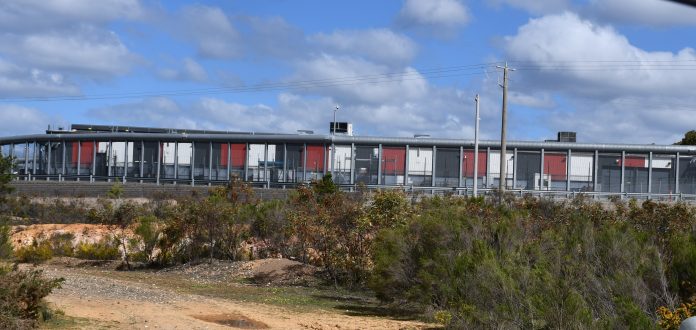Notorious Hoddle Street killer Julian Knight, 57, has been moved from maximum-security incarceration into the medium-security Loddon Prison in Castlemaine.
On August 9, 1987, the then 19-year-old Knight fired a semi-automatic rifle on Hoddle Street, Clifton Hill, killing seven people and injuring 19.
The former Australian Army officer-cadet pleaded guilty and was sentenced in 1988 to life with a minimum of 27 years.
Twenty-six years later, in 2014, the Corrections Act was amended, specifically naming Knight in the legislation to prevent him from early release on parole.
By bringing in this legislation, parliament changed Knight’s original sentencing conditions that the presiding judge had given.
Retired KC Tom Gyorrfy, who was involved in writing the Sentencing Act 1991, told the Express he had never seen this done before or since.
“Previously, the general principle was that the minimum sentence imposed by the judge decided if and when the person became eligible for parole,” he said.
“The parole board then decided if and when parole was granted,” he said.
“Bringing in legislation that overrides a judge’s ruling is not how the criminal system is supposed to work. A fundamental part of our Constitution is a separation of powers, under which, parliament passes laws and the courts give effect to them.”
Knight was incarcerated in Pentridge Prison from 1988 to 1994 and at Barwon Prison, near Geelong, from 1994 to 2005. For the past 20 years, he has been an inmate at Port Phillip’s maximum-security facility.
With the imminent closure of Port Phillip in December, Knight, who has served the past 38 years in maximum security facilities, had his security classification reviewed.
A Department of Justice and Community Safety spokesperson said these prisoner reviews occurred regularly.
“Security classifications consider several factors, including the risk posed to staff and the community,” they said.
“This includes the work of the High Risk Management Advisory Panel. The panel includes Australian Federal Police, Victoria Police, Corrections Victoria and a former Supreme Court Judge who make recommendations to the Corrections Commissioner.”
According to Mr Gyorrfy, Knight would have had to undergo multiple tests and psychological reports as part of the parole board’s decision to move him out of a maximum-security facility.
Knight, who has spent years lobbying to be moved out of maximum security and who has been declared by the Supreme Court as a ‘vexatious litigant’, was permitted a move to the medium-security prison located on the outskirts of Castlemaine.
Mr Gyorrfy told the Express that he believed maximum security conditions to be harsh, with inmates isolated and often locked down for up to 23 hours a day.
He referenced recent remarks made by Justice Beale during the sentencing of Erin Patterson in the ‘mushroom murder’ case, in relation to the Sentencing Act, which stated that sentencing was designed to ensure just punishment, rehabilitation, denunciation and the protection of the community.
“People have to understand that the cruelty level of being kept in prison is significant,” Mr Gyorrfy said.
“The inmate should be kept in conditions that are necessary to keep the community safe. They are being punished by being taken out of society; we don’t have to ‘torture’ them by making the serving of the sentence harsher than is necessary to meet its purpose.”
Conditions of parole for Knight, as outlined in the amended legislation, include: if he is in imminent danger of dying or is seriously incapacitated, and as a result, he no longer has the physical ability to do harm to any person, and if he has demonstrated that he does not pose a risk to the community.







